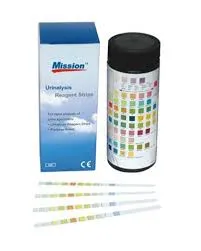Sep . 02, 2024 09:37 Back to list
ovulation test device
Understanding Ovulation Test Devices A Comprehensive Guide
Ovulation test devices have become essential tools for many women trying to conceive. These devices help to identify the most fertile days in a woman's menstrual cycle, allowing for better family planning. In this article, we will explore how these devices work, their benefits, and tips for effectively using them.
What is an Ovulation Test Device?
Ovulation test devices are designed to detect the surge in luteinizing hormone (LH) that occurs just before ovulation. This LH surge is typically a sign that ovulation is imminent, usually occurring 12 to 36 hours before the release of an egg from the ovary. By identifying this surge, women can pinpoint the best time to engage in intercourse for conception.
There are various types of ovulation test devices available in the market, including urine test strips, digital tests, and saliva-based tests. Urine test strips are the most common and affordable option, whereas digital tests provide clear readings and often include helpful indicators to confirm the LH surge.
Benefits of Using Ovulation Test Devices
1. Increased Chances of Conception By accurately identifying the fertile window, ovulation tests can significantly improve the chances of conception. Couples can time intercourse more effectively, targeting the days when the chances of sperm meeting the egg are highest.
2. Understanding Menstrual Cycles These tests provide valuable insights into a woman’s menstrual cycle. Regular use can help women track their cycle patterns, which can be especially beneficial for those with irregular periods.
3. Less Guesswork Unlike traditional methods of tracking ovulation (such as monitoring basal body temperature or cervical mucus), ovulation test devices offer more precise measurements. This can reduce the anxiety and uncertainty that often accompany conception efforts.
ovulation test device

How to Use Ovulation Test Devices
Using an ovulation test device is fairly straightforward, but here are some tips to enhance accuracy
1. Timing Start testing a few days before you expect ovulation based on your average cycle length. For example, if you have a 28-day cycle, begin testing around day 11.
2. Follow Instructions Read and follow the instructions provided with your specific test device. Different brands may have varying methods of testing and interpreting results.
3. Test at the Same Time Daily Consistency is key in testing. Testing at the same time each day can help maintain accuracy. For best results, it’s recommended to test in the afternoon or early evening as LH levels tend to surge in that time frame.
4. Stay Hydrated, but Not Too Much While staying hydrated is important, avoid excessive fluid intake just before testing. Diluted urine can lead to false negatives.
5. Track Your Results Keeping a record of your test results can help identify patterns and better understand your ovulation cycle over time.
Conclusion
Ovulation test devices are a valuable tool for women seeking to conceive. By understanding their function and effectively using them, couples can increase their chances of pregnancy and gain greater insights into women's health. Whether you’re planning to start a family soon or simply want to track your reproductive health, these devices can provide the information you need to make informed decisions.
-
Pregnancy Test Calculator: Know Your Weeks, Week by Week
NewsAug.22,2025
-
Malaria Pf Ag Rapid Test Kit - Quick & Accurate Detection
NewsAug.11,2025
-
Accurate Cardiac Marker CK-MB Rapid Test for Quick Results
NewsAug.10,2025
-
Premium Empty ABS Plastic Cassette for Test Strips
NewsAug.09,2025
-
Sterile Urine Cup: Accurate Specimen Collection for Labs & Home
NewsAug.08,2025
-
Malaria Pf/Pan Ag Rapid Test Kit for Fast, Accurate Diagnosis
NewsAug.07,2025

